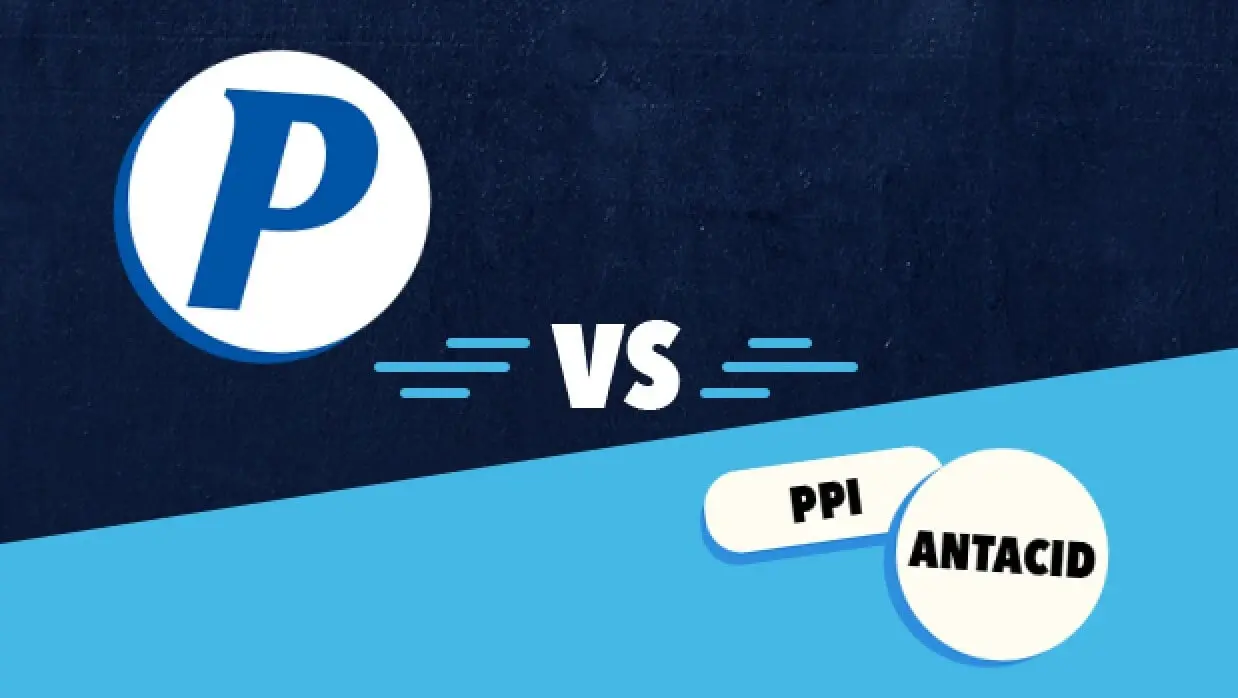When certain fluids rise from your stomach into your mouth, throat and esophagus – you may experience “acid reflux”. Feelings of heartburn or indigestion1 can also follow.
Many of us will experience acid reflux symptoms from time to time, especially if we’ve just finished a big meal. However, it can become a recurring medical problem, known as gastroesophageal reflux disease (GERD)1. Some people will need to take acid reflux medicine or make lifestyle changes to manage this condition2.
Read on to discover what causes acid reflux, and common signs to be aware of. We’ll also look at potential acid reflux remedies you can try.
What Causes Acid Reflux?
Acid reflux is usually a result of your stomach doing the opposite of what it’s meant to. Instead of stomach acids staying down to help digest foods within your body, they travel up into your mouth and throat.
One of the main acid reflux causes is a muscle problem. Everyone has a valve connecting their stomach to the end of their throat – known as the lower esophageal sphincter. When this muscle weakens and fails to close fully, acid can escape from the stomach to your throat. This can then irritate and inflame the esophagus lining3.
Potential triggers for this process, and wider acid reflux symptoms, include:
A hiatal hernia. This is when some of your stomach is pushed higher than the diaphragm3
Pregnancy or obesity. Being pregnant or having a higher weight can increase the pressure on your diaphragm muscles, which are key to supporting the lower esophageal sphincter2
Lying down after a large meal. You may experience symptoms if you lie down within three hours of eating, or go to bed/sleep4
Lifestyle factors. Other possible acid reflux causes include smoking, eating lots of fried foods, drinking alcohol, and taking certain medicines for other conditions2
Acid Reflux Symptoms
Acid reflux can lead to a range of unpleasant symptoms, such as:
Heartburn. This intense burning feeling can occur behind your breastbone. Heartburn may also appear at the center of your chest or the back of your throat1
Acidic taste. You might experience acid regurgitation in your mouth and upper throat5
Sore throat or dry cough. Some people experience cold or asthma-like symptoms too, including wheezing or coughing, due to the irritation caused by the stomach fluids1
Acid indigestion. This can leave you with a burning sensation around your stomach area1
Nauseous feeling. This may occur soon after eating, and be a sign that acid reflux is about to happen1
What Does Acid Reflux Feel Like
Acid reflux symptoms can make you feel very uncomfortable. Heartburn can cause a burning sensation in your upper body, which may be alarming. This might get even worse if you bend over or lie down4.
Meanwhile, acid indigestion and inflamed tissues in your mouth and esophagus can make you feel like you’re shorter of breath or experiencing a sore throat1.
What’s more, regurgitated acid isn’t generally a flavor you’d choose to have in your mouth. It can leave a quite literally sour and bitter taste when it strikes.
Acid Reflux vs Heartburn
When discussing acid reflux vs heartburn, people often confuse them for the same thing. But they’re not.
Acid reflux is when acidic fluids escape from your stomach back into your throat and mouth. It might also be referred to as ‘GERD’ if it becomes a medium or long-term issue1.
Heartburn is one of the main symptoms of acid reflux, causing chest pain behind your breastbone or burning sensations around the back of your throat.
Heartburn and acid reflux shouldn’t cause you discomfort for too long if it’s only occasional, and over-the-counter medications such as antacids could help6.
If you’re suffering from regular heartburn, check with a healthcare professional to see if it could be linked to a more serious condition.
Learn more about the differences between acid reflux, heartburn and GERD with our helpful guide.
Acid Reflux Treatment and Home Remedies
A variety of treatment options and home remedies for acid reflux can help relieve the main symptoms – or even help you to prevent them in the first place.
Try to minimize bouts of acid reflux through…
Lifestyle Changes
Making certain alterations to your daily routine can sometimes be helpful:
Changes to your diet. Alcohol, citrus fruits, fatty foods, spicy dishes and even chocolate have all been linked to acid reflux symptoms7. So, avoiding or at least reducing your intake of these might be advisable. Read our acid reflux diet guide for more details
Improved posture. Slouching or lying down after eating is thought to increase the risk of acid reflux4. As a result, it might be worth thinking carefully about your posture during and after meal-times. Standing up, or sitting with a straight back, are preferable
Tweaking your eating habits. Leaving a gap of two to three hours between dinner and bedtime may prove a simple yet effective acid reflux treatment. Losing excess weight1 may also help lower the risk of symptoms
Quitting smoking. Smoking can weaken your lower esophageal sphincter or even slow your digestion down – so consider reducing or cutting out smoking altogether1
Reducing meal sizes. Eating smaller dishes could speed up the digestive process and lower acid levels in your stomach to begin with1
Acid Reflux Medications
There are three main types of non-prescription acid reflux medication:6
Antacids. These treatments aim to neutralize acid in your stomach, while providing quick relief
Histamine (H2) blockers. These medicines are all about lowering acid production, and typically provide longer-lasting relief
Proton pump inhibitors (PPIs). These are designed to block the production of acid. Meanwhile, they have the potential to heal esophagus damage. However, there have been growing concerns around these treatments8
PEPCID COMPLETE® offers fast-acting relief from heartburn and acid indigestion. This over-the-counter chewable tablet contains an antacid, plus an H2 blocker, combining two of the most popular medications in one.
It relieves heartburn and acid indigestion for up to 12 hours with just one tablet.*
Meanwhile, PEPCID AC® Maximum Strength, Icy Cool Mint is an H2 blocker that offers long-lasting relief from heartburn symptoms and acid indigestion. It also has an added cooling sensation for irritated mouths and throats.
*Based on 9-hour acid control studies during the day and 12-hour acid control studies during the night. Acid control does not imply symptom relief.
Other Options for Acid Reflux Relief
If conventional acid reflux remedies don’t work, your doctor might recommend prescription-strength treatments or further testing. For example, an X-ray or upper endoscopy9. That way, they can check if you’re suffering from GERD, rather than short-term acid reflux.
Want to know more? Check out our in-depth guide to learn all about the differences between acid reflux medicines.




